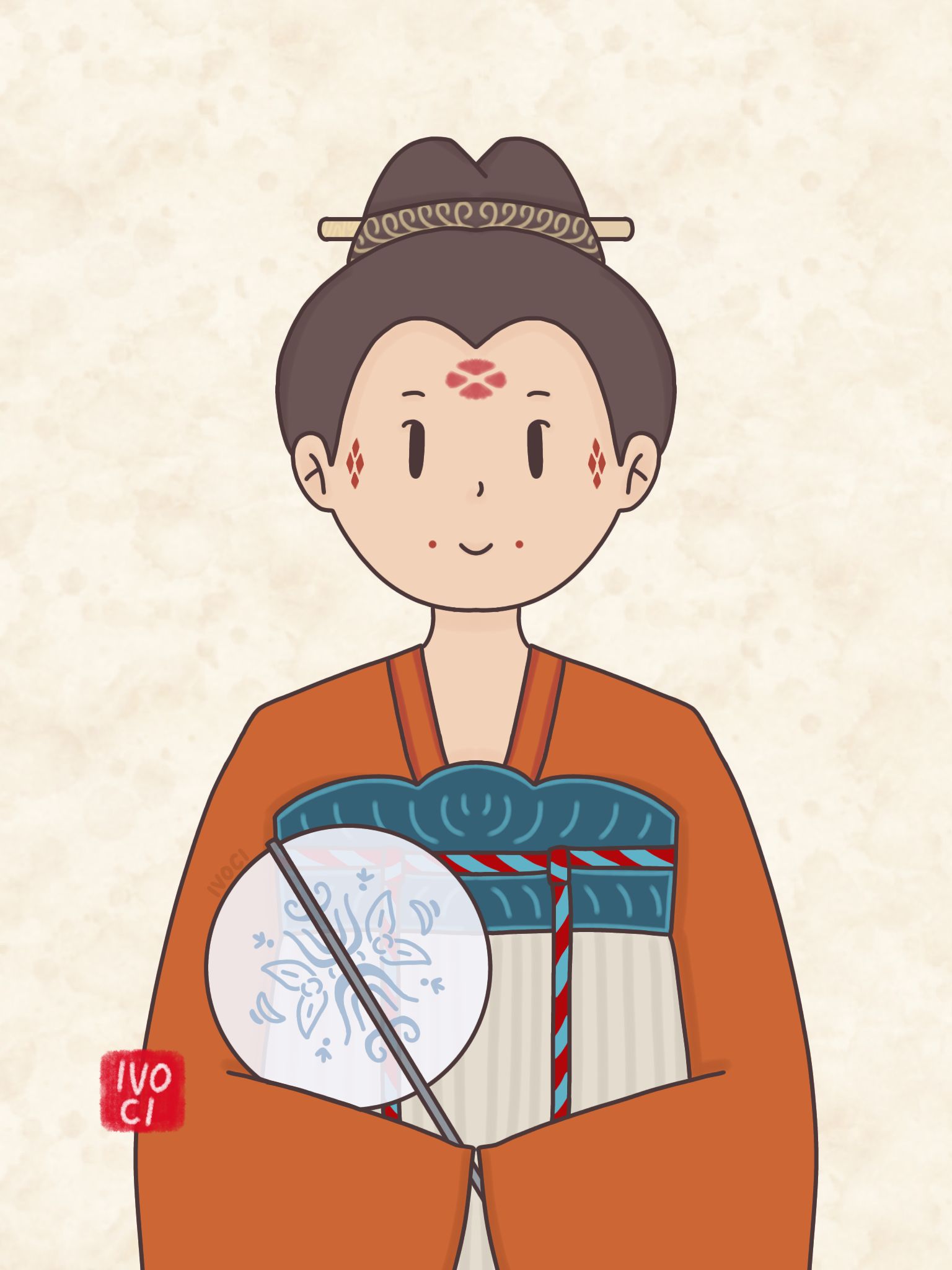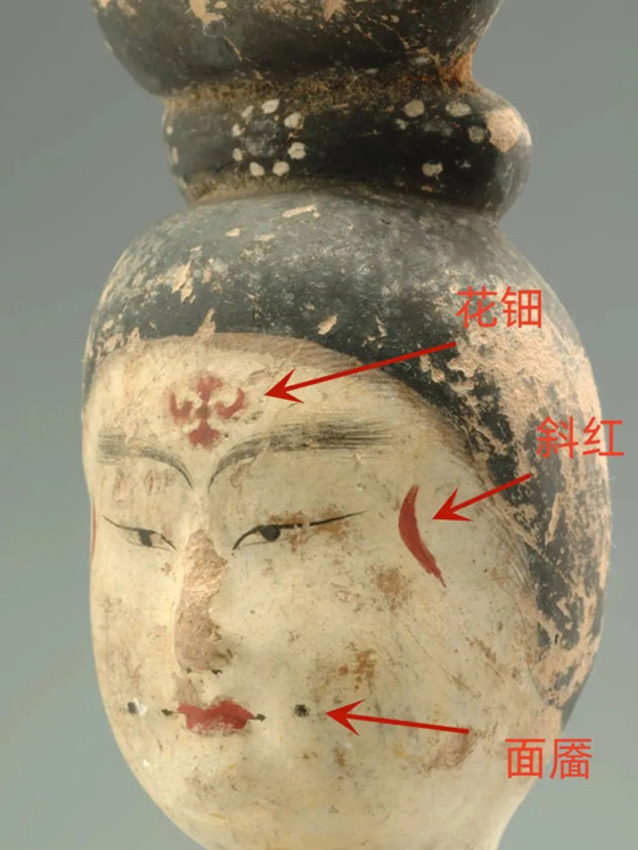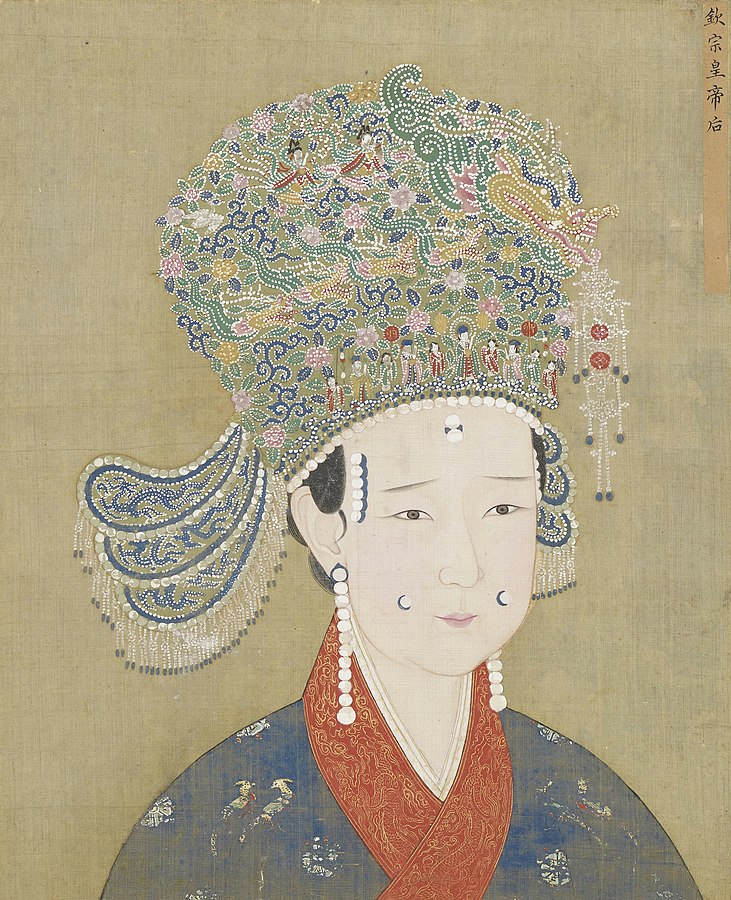Mian Ye (Chinese: 面靥 ; pinyin: miàn yè), translated directly as face dimple, is one of the ancient women’s facial makeup.
In “Ling Biao Lu Yi (岭表录异)” by Liu Xun (刘恂) of the Tang dynasty: “鹤子草,蔓生也。其花麴尘,色浅紫,蒂叶如柳而短。当夏开花,又呼为绿花绿叶。南人云是媚草,采之曝乾,以代面靥。”
Face dimples refer to the small indentations in facial skin that often appear when laughing. The presence of dimples will make facial expressions livelier, look more lively and beautiful, and more charming, so it is considered a sign of beauty, and many ancient young women liked it so they draw dots in the corners of the mouth.
Mian Ye is a type of makeup applied to the dimples of the cheeks, usually painted/colored with rouge.
Wang Jia of the Eastern Jin dynasty recorded story in 《拾遗记》, saying that Sun Quan’s son, Sun He, loved Lady Deng and often held her on his knees. One night, Sun He waved the Ruyi crystal under the moonlight, and injured Lady Deng’s cheek, and blood flowed down her face.
Sun He hurriedly called for the imperial doctor to make an ointment. The imperial doctor said that scars could be removed by mixing white beaver marrow, jade flakes, and amber flakes. Sun He then offered the world a hundred gold bounty and obtained the bone marrow from the white beaver. As a result of using too much amber powder, Lady Deng applied it, and red spots remained on her cheeks, but Sun He felt that Lady Deng looked prettier. Sun He’s other concubines also drew red dots on their cheeks.
In the Tang dynasty, Mian Ye, along with Huadian and Xiehong, became the makeup that was often found at that time, and later in the Song dynasty, the empresses and women liked to stick pearls on their faces. Huadian, Xiehong, and Mian Ye’s positions did not change.
Liu Xi of the Han dynasty also mentioned another saying in “Shi Ming”, when the emperor’s concubines were in their periods, they would mark their faces with red dots.




Leave a Reply